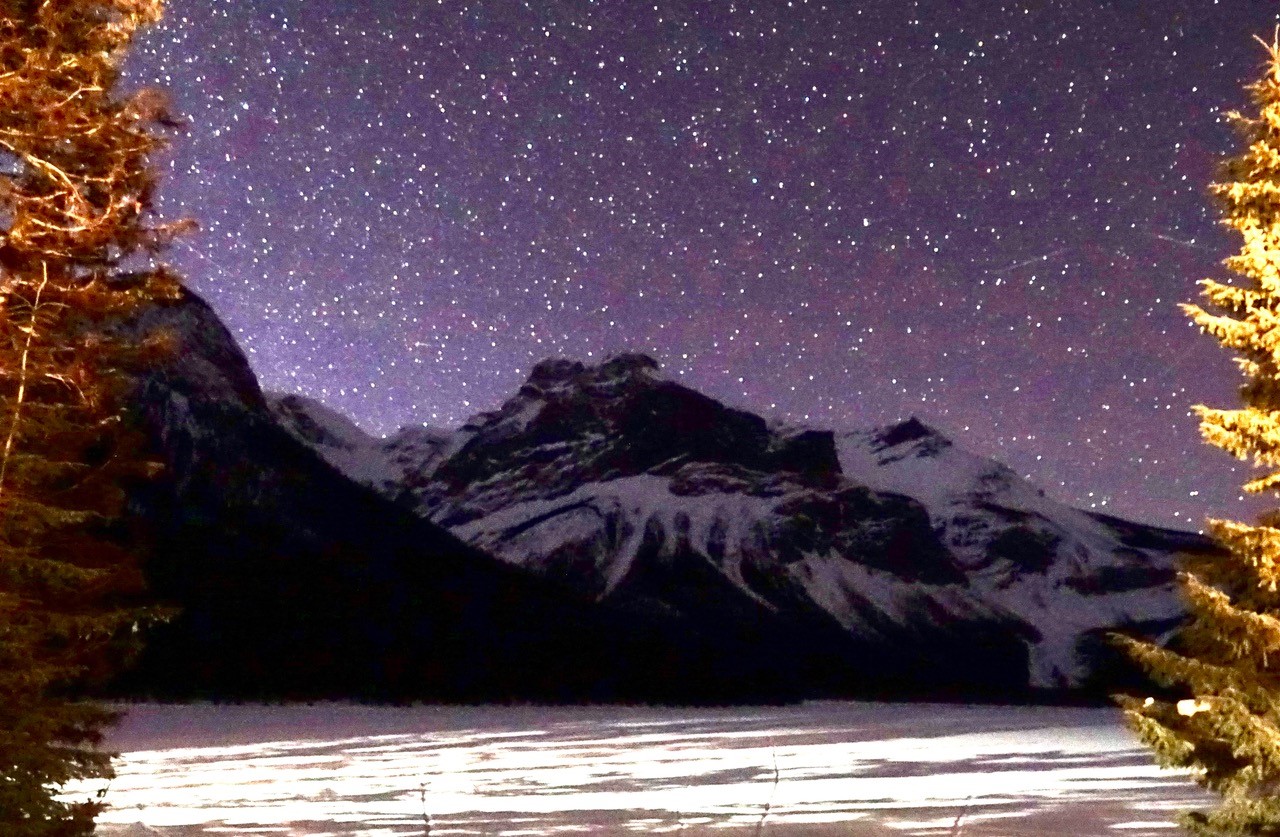Yoho National Park at night. Photo Carol Patterson
Originally published April 2, 2021
As if you needed another reason to visit Emerald Lake Lodge in Yoho National Park, it’s also a wonderful place to stargaze or indulge in night photography. It’s not a Dark Sky Preserve like Jasper National Park to the north, but it offers night sky viewing with four-star luxury. Each cabin-style building offers mountain comfort with wood-burning fireplaces, cosy feather duvets, and balconies with lake views. You can dine on cuisine inspired by the park’s historical roots in the main lodge with a century-old fireplace and an oak bar from an 1890’s Yukon saloon.
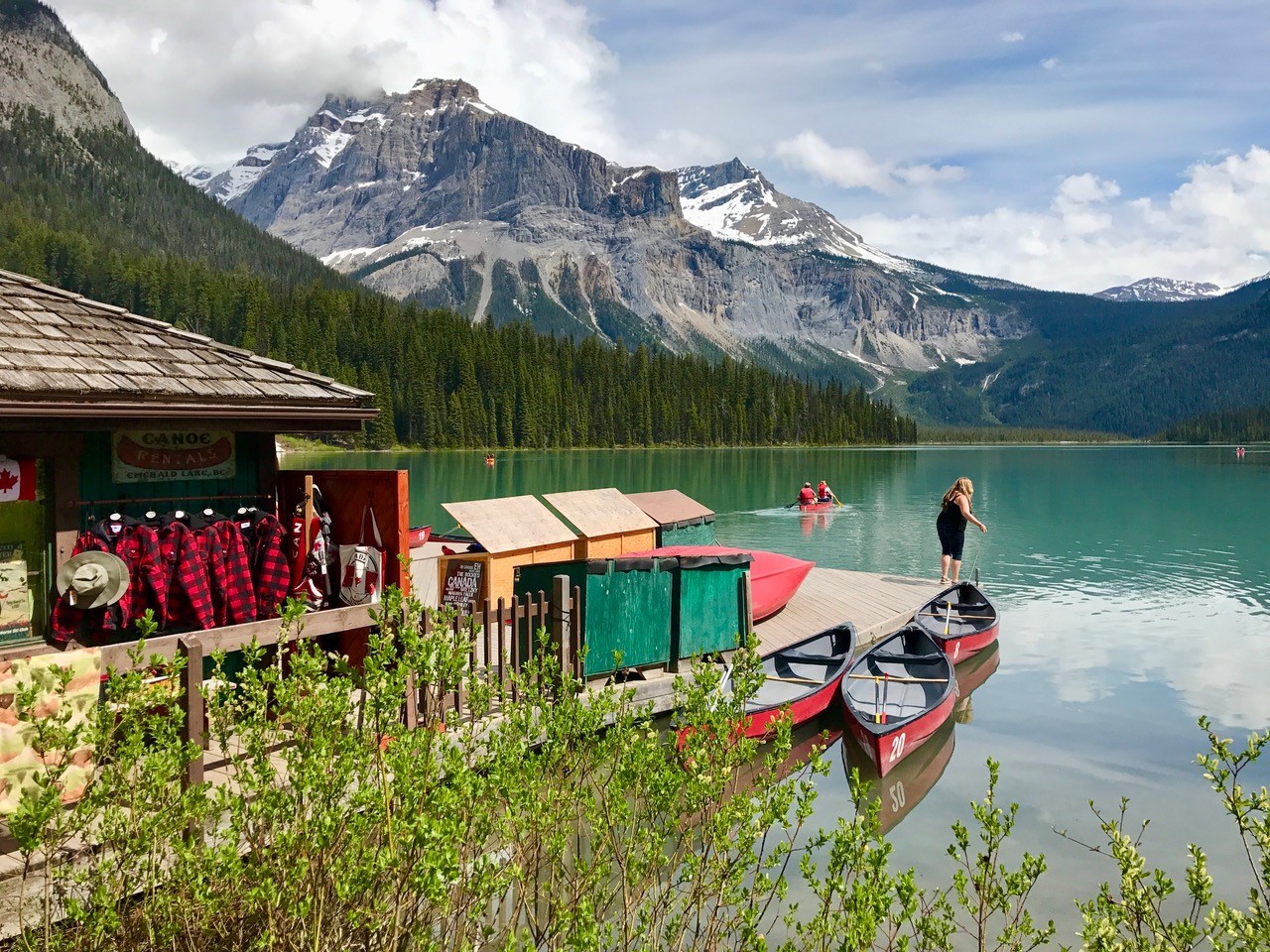
Enjoy paddling adventures on emerald-coloured water. Photo Carol Patterson
During the day, you can paddle your canoe across emerald waters, hike to ancient Burgess Shale fossils or tour some of the area’s waterfalls. Then as night falls take advantage of the wilderness location and try some sky gazing. Binoculars or telescopes can be handy, but even with the naked eye, there’s plenty to see.
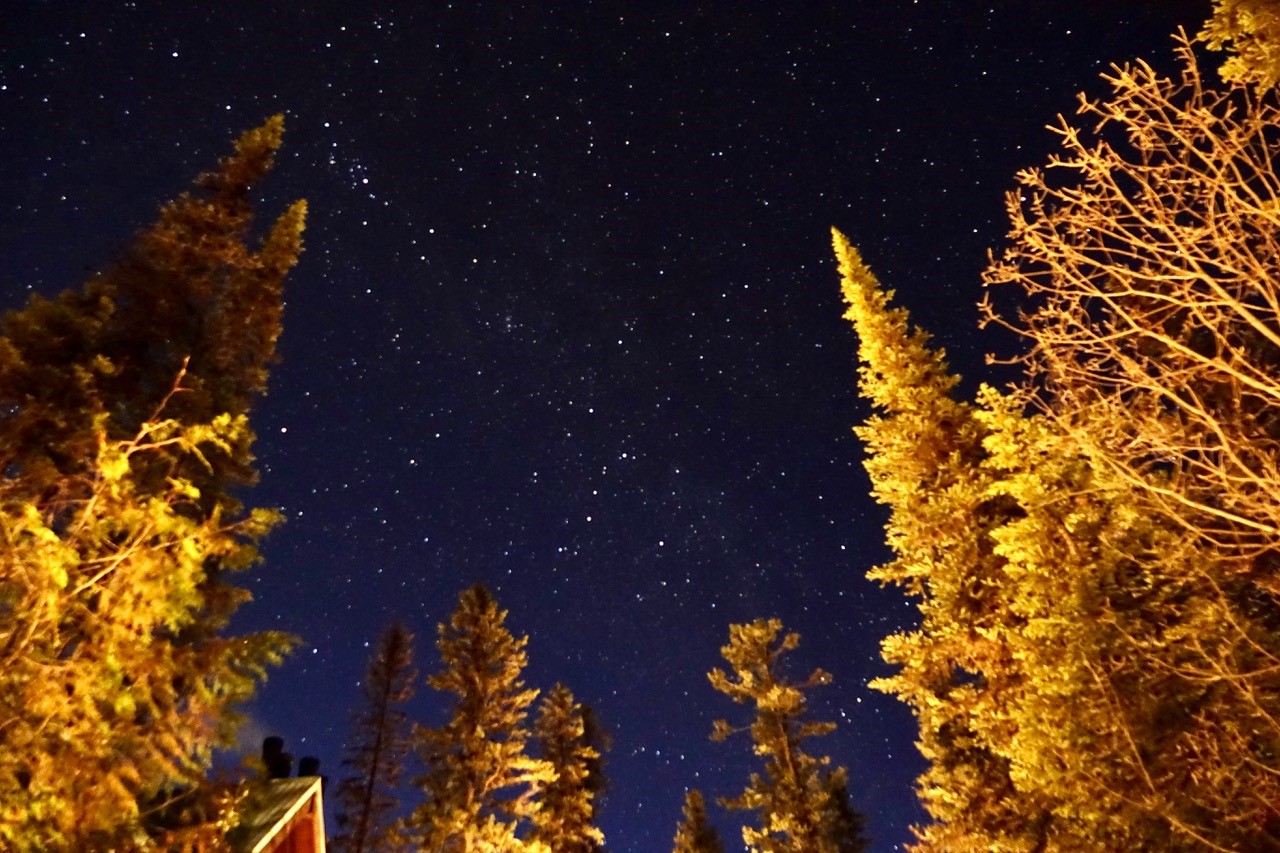
Well-lit pathways make nocturnal adventures safer. Photo Carol Patterson
Six reasons why dark sky adventures here are special:
- Emerald Lake Lodge is far away from urban lights so there’s no urban glow in the sky
- You only have to walk steps from your room to be enveloped in darkness (and there are lit pathways to make some of the stroll safer)
- If you’re travelling with early-to-bed companions, there’s the option to leave them behind in your room snoozing under soft bedding or reading in front of the fireplace while you undertake your nocturnal explorations.
- Emerald Lake and the President and Vice-President peaks make a stunning foreground for a blanket of stars.
- You can come inside to warm up and go back out later if you’re checking for special phenomena like an eclipse or northern lights that might not be visible all night.
- You can reward yourself with a hearty breakfast or soak in the outdoor hot tub the morning after.
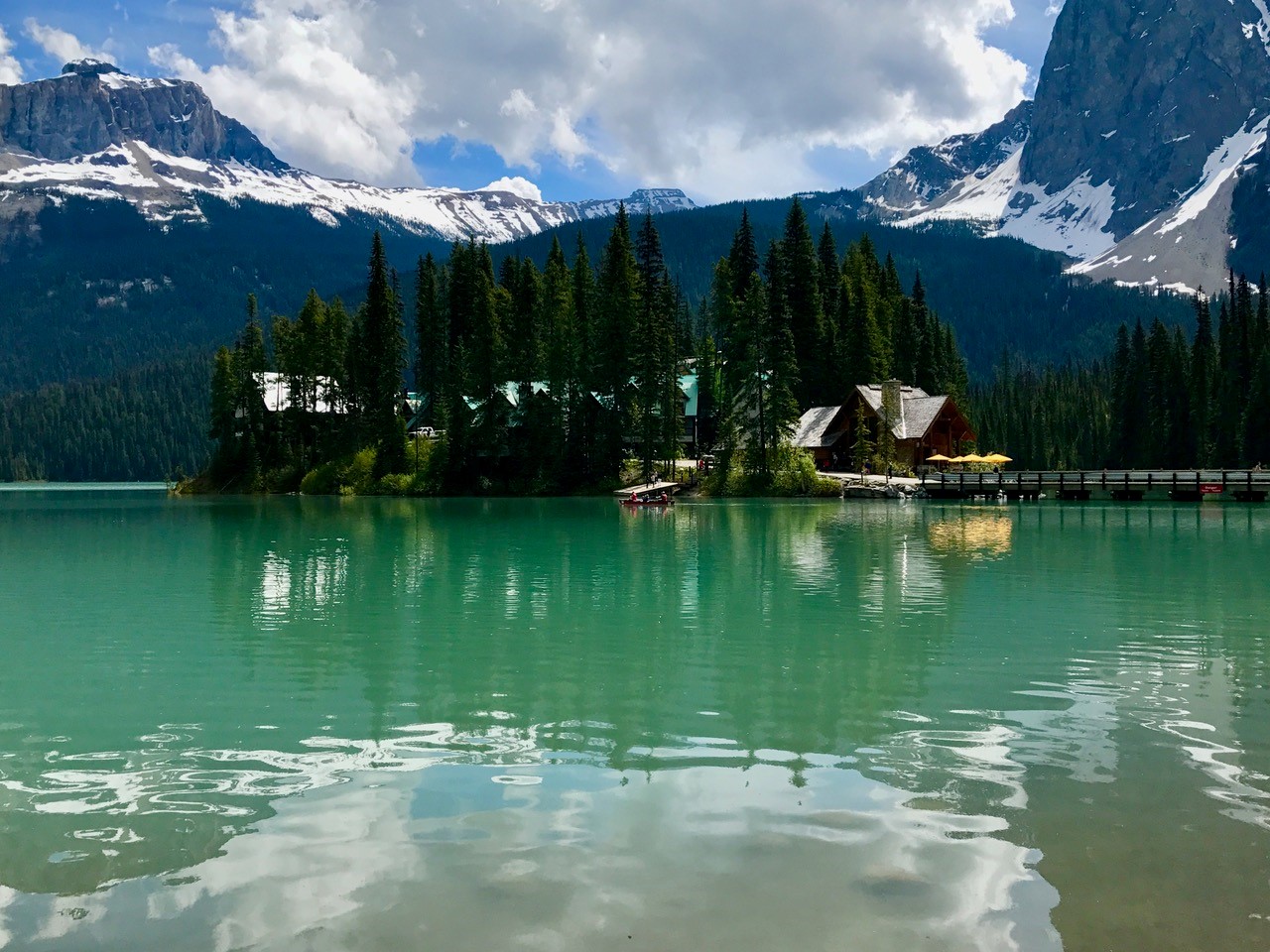
Emerald Lake Lodge offers night sky viewing with four-star luxury. Every cabin-style building offers wood-burning fireplaces and mountain views. Photo Carol Patterson
What to look for in 2021?
Even if you’re new to astronomy and can’t tell a planet from the Big Dipper, enough celestial events appear during spring and summer to make looking up worthwhile. Some possibilities include:
Full moons – Each full moon marks a seasonal shift starting with the super moon (when the full moon happens as the moon is closest to earth) on April 27th, known as the pink full moon for phlox – a pink flower that blooms in spring (but not native to Emerald Lake). The other super moon in 2021 happens on May 26 with the flower moon – named for all the flowers that bloom around this time. Enjoy the longest day June 21 before watching the Strawberry moon rise June 24.
Meteor showers – If you like wishing on shooting stars, you’ll enjoy looking for meteors streaking across the night sky during the Lyrid Meteor Shower April 22-23 or the other meteor showers Eta Aquarid May 5-6 and Perseid August 12-13.
Lunar Eclipse – If skies are clear, you can see the total lunar eclipse before sunrise on May 26. For the total eclipse you’ll need to be outside by 5 am to see the reddish tinge (sometimes called the Blood Moon) when the moon travels through the earth’s shadow and all direct light from the sun to the moon is blocked.
Northern Lights – The bright colours of aurora borealis can be seen in the mountains on clear nights, although you may need to stay up late to see them. Spring and fall can be good times to see the lights dance but increase your odds of seeing them by checking websites forecasting the geomagnetic activity that causes the lights. AuroraWatch.ca offers real-time monitoring in the Edmonton Area; sign up for alerts for the best times to see the aurora.
Earthshine – A few days before or after a new moon – when the moon appears as a crescent – is a good time to see earthshine, the pale glow on the unlit part of the moon. It’s also known as the Da Vinci glow because Leonardo Da Vinci postulated correctly that the lunar surface was lit from sunlight reflected from the earth. It’s not one of the artist’s famous pictures but viewing it will paint your travel diary with memories.
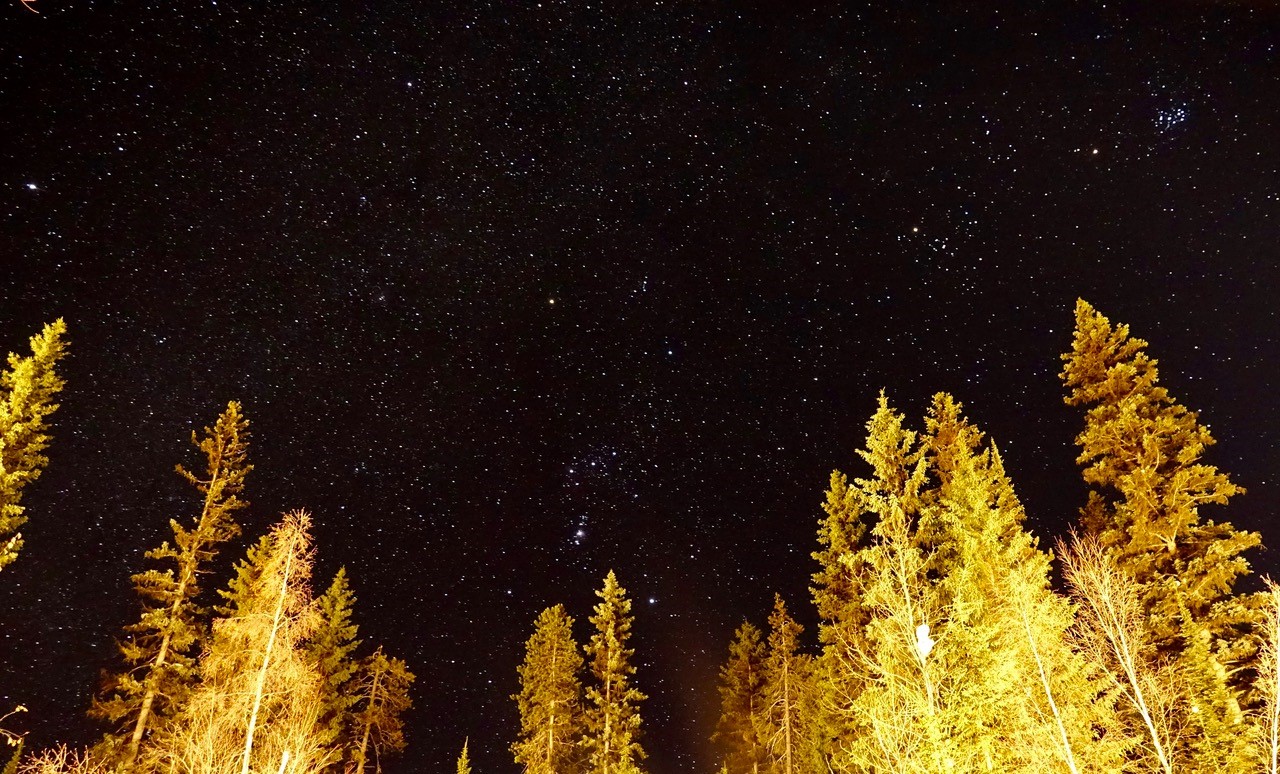
Each season brings different constellations and astral phenomena. Photo Carol Patterson

